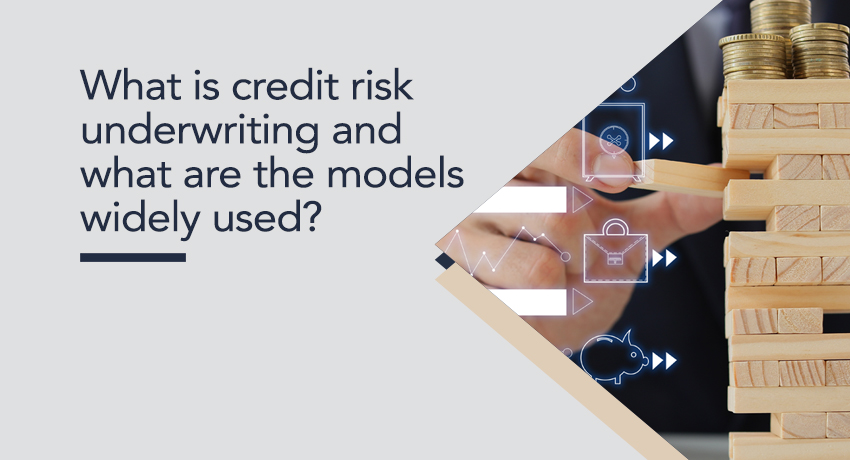What is credit risk underwriting and what are the models widely used?

The principal objective of financial institutions is to provide individuals and corporations with financial assistance. However, while doing so, the said financial institutions must safeguard themselves from underlying risks. Credit risk underwriting is the process through which financial risk is gauged with the help of data extracted from clients. It typically involves loans, insurance, real estate, investments, etc. This process helps financial institutions to assess the risk they are willing to undertake and the extent of risk involved with a particular client.
Financial institutions use credit risk analysis models to ascertain the ‘Probability of Default’ (POD) of a potential borrower. The models provide vital information on a client’s credit risk at any particular time. Failing to assess the risk associated with a borrower can result in huge losses for the lender.
Main Types of Credit Risk
- Credit Default Risk- Credit default risk is when a borrower defaults on the repayment obligation or has crossed 90 days past the due date. Although this risk can be a result of broader economic changes, it affects all credit-sensitive financial transactions.
- Concentration Risk- For instance, when a borrower majorly relies on a single supplier/buyer for his line of business, he indulges in a high level of concentration risk. The lack of diversification can threaten the overall operations of the borrower and the lender.
- Country Risk- This risk is on a broader level; when a country defaults on foreign currency repayment obligations. This may happen due to a country’s political or economic instability which impacts the value of assets or operating profits.
Underwriting Models widely used to ascertain Credit Risk
- Traditional Approach- Certain certified credit risk analysis agencies offer ready data to institutions to ascertain risks involved in different sectors of operation. For instance, they provide a complete analysis of risks associated with mortgage loans, industrial loans, real estate loans, education loans, etc. Financial institutions pick this ready data and implement it through their functionalities to avoid credit risk.
- Rating Based Approach- Financial institutions arrive at ‘Expected Loss’ through a formula-driven method where Probability of Default (POD), Exposure at Default (EAD) and Loss Given Default (LGD) is calculated. Credit risk analysts derive a percentage and determine whether or not the risk association by offering credit is acceptable to the financial institution.
- Advanced Rating Approach- Based on algorithms and the aforementioned attributes, financial institutions can calculate the risk quotient and implement advanced technology, framework and modeling to obtain detailed information.
Conclusion
Risk is inevitable and cannot be mitigated completely by financial institutions. Rather, they can work smartly in a technology-driven manner to minimize it and forecast credit risk with greater accuracy. Financial institutions should consider the probability of default, loss given default and exposure at default to function in a more cultured manner. Underwriting models have evolved over time and at present financial institutions can indulge in better and more accurate models to reduce the risk associated with the credit system.

